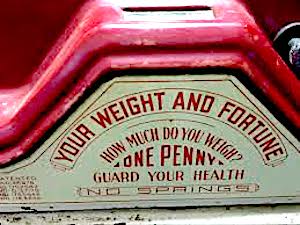
Dieting to lose weight can be a hassle, especially late in life, when, as Fats Waller sang, we don’t get around much anymore.
Spending at a “safe” annual rate in retirement is a type of dieting. But instead of kale salads, you consume dividends, interest, capital gains, Social Security benefits, pensions, annuity income or principal.
We tend to avoid income planning and dieting. Nonetheless, choosing a prudent withdrawal rate—not just in Year One of retirement but in every year thereafter—is important, especially for those who hope to tease a stable income from a vacillating portfolio.
Four percent used to be the default withdrawal rate from a 60:40 portfolio. But after a 40-year bull market in stocks and bonds, gurus like Wade Pfau warn that fallow seasons lie ahead. They advise retirees to trim that 4% rate by 10% (to 3.6%) or even 20% (to 3.2%) if they want their money to last 30 years.
In the latest edition of Morningstar’s quarterly magazine, investing experts Christine Benz, Jeffrey Plak and John Rekenthaler compare the hypothetical outcomes of different “safe withdrawal” methods, assuming a $1 million 50/50 portfolio, a start age of 65, and a 90% chance of not zeroing out before age 95.
The four methods are:
Withdrawing four percent the first year and then adding annual upward inflation adjustments when necessary, except in years when your investments are down.
Using the Required Minimum Distribution (RMD) method, which gradually raises the annual withdrawal rate as life expectancy shrinks.
The “guardrails” strategy that smoothes income by spending only moderately more in good years only moderately less in down years.
A 10% spending reduction after a losing year.
For additional perspective, they compared these methods with a “control” method of 4% plus inflation adjustments every year.
Each method revealed certain strengths and weaknesses in the face of identical hypothetical market conditions. The more annual income they permitted, the lower the portfolio’s value at the end of 30 years. Predictably, their specific rules resulted in smoother or choppier spending patterns over the years.
For Method One, where the retiree skipped inflation adjustments to a 4% withdrawal during down performance years, the average lifetime portfolio withdrawal rate was 3.45%, the standard deviation of cash flow was a mere 5%, and the retirees ended up with more money ($1.33 million) than they had at retirement.
Method Two, the RMD method, is designed to exhaust tax-deferred portfolios before death, produced a high average annual income (4.6%) but with a whopping cash-flow standard deviation of 49% and an ending balance of just $130,000.
Method Three, the “guardrails” method championed by Jonathan Guyton and William Klinger, offered a compromise between the two previous methods. It delivered a 4.07% average annual income, a standard deviation of 30% and an average ending value after 30 years of $740,000.
Method Four, which involved a 10% austerity haircut in losing years, resembled method one in its results. It produced an average annual income of 3.42%, a standard deviation of cash flow of only 8%, and a legacy value of $1.4 million.
In the real world, of course, there are a lot more variables than in a hypothetical world. Retirement security depends a lot on luck. You don’t know whether you’re retiring with the wind at your back or in your face. That’s especially true if you’re relying on risky investments to yield bread-on-the-table every night instead of covering all your basic expenses with a pension, Social Security, or an income annuity.
There are certain factors you can control. Retiring later means fewer years to finance. Claiming Social Security later allows you to qualify for higher monthly benefits for life, especially if you work and contribute to the program until age 70. Paying off your mortgage and other debts before retirement eases the pressure on your investments.
Safe withdrawal rates are hard to determine in part because no one knows how long he or she will live and need an income to live on. Annual adjustments to spending rates can also be labor-intensive. The uncertainty of such a plan can also create a lot of anxiety.
One alternative for someone with $1 million and a need for $40,000 a year in excess of Social Security would be to put $500,000 in a fixed-rate, 10-year annuity and the other half in a risky portfolio, and lean on withdrawals from the annuity when stocks don’t do well. That cushions you from market risk.
Or you could hedge your risk another way: Use $300,000 to buy a life annuity paying $18,000 a year for life (with 10 years certain) and draw another $22,000 (3.3%) from your remaining $700,000 investment portfolio. That cushions you from market risk and from longevity risk. Guaranteed annuities, appropriately customized and combined with invested assets, can buffer financial risks and let clients sleep more easily in retirement. Unless they are multi-millionaires, why should retirees expose all of their money to the mercy of the markets?
© 2022 RIJ Publishing LLC. All rights reserved.


